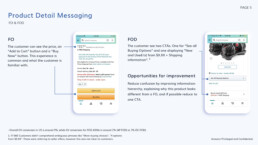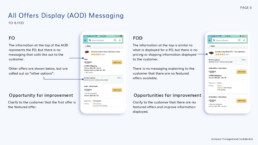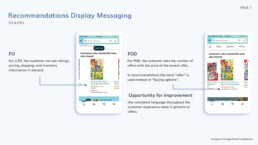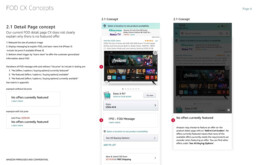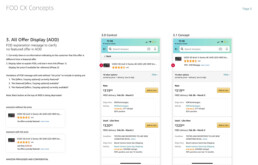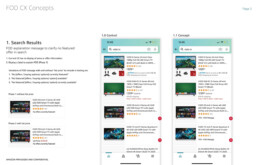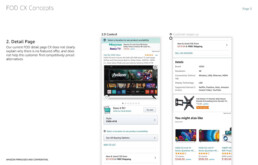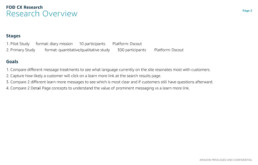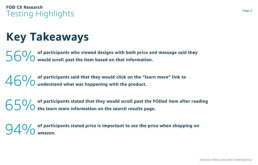Amazon Shop
On my second contract at Amazon I had the opportunity to work as part of the Shop FOD team, which focuses on featured offer disqualification and fraud within the available products that the customer sees. Their job is to protect customers from unfair product offerings while protecting sellers and creating a fair environment for them.
Imagery is limited to respect the privacy of the project and client, more detailed explaination available in interview.
ClientAmazonMy RoleUX Designer/UX ResearcherSoftwareSketch, Invision AppTeamShop FODYear2020 - 2021Length1 year
Evaluating the problem
Amazon has two specific types of purchase flows, one for “featured offers” and one for products that are listed but not featured. Customers are almost always only aware of featured offers which have the “buy now” button. As the first stage of this project I was ask to do a UX evaluation of the flow from product discovery to the last step before checkout for the two specific type of product flows. They wanted someone with relatively fresh eyes and UX expertise to review the flows and document any inconsistencies or points of friction, assess what is working and suggest areas for improvements along the purchase journey. Part of this process was spending hours searching thru the research database for reported issues that supported the observed issues.
The entire document was 20 pages and used as part of a presentation to senior leadership and partnering shop teams to gain buy in for the effort of future improvements to the shop flow. Any change to the core shop page must have strong evidence supporting it due to the fact that it is quite costly and a large effort to launch any feature globally.
The Challenge
Amazon shop functions as a marketplace where sellers provide product offering for customers competing with each other for prime real estate within the search listing, balancing price with quality within their offer to attract customers.
Amazon uses particular guidelines to promote offers to customers and demote seller offers that do not meet the criteria to be consider a competitive offer. For Amazon, customers always come first, and sellers a close second, without both Amazon would not be what is has become today.
Not all offers are equal or competitive for the customer, specifically during Covid there were some sellers with product offering that were guilty of “price gouging” and yet were still visible to the customer because they were the only offers available due to limited quantities. To protect customers from these non competitive deals friction was added to the flow for these “disqualified” offers. This temporary solution not only confused and frustrated customers but resulted in a fairly serious inquiry from the US government.
The core of the challenge was to devise a solution that both protected the rights of Amazon’s sellers while explaining to and protecting customers from unknowingly trying to purchase uncompetitive offers due to lack of options.
Solutions and testing
Due to the sensitive nature of this situation, all of the obvious solutions were not viable options. A solution was needed that would protect customers from uncompetitive pricing but also treat sellers fairly. The solution was transparency, be as clear to the customer that these offers were not selected as the best offers without passing judgement on sellers as being potentially bad deals.
Testing Results
To validate that the proposed design solutions were effective and to choose the final structure for messaging, multiple options were tested at scale using the DScout platform. Two studies were preformed, a pilot study of 10 participants and a large scale study with 300 participants. The results show that customers needed to see the price as well as an explaination as to why the offer was not a featured offer to make an informed purchase decision.

